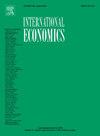通货膨胀通过供应链扩散
引用次数: 0
摘要
本研究探讨供应链与生产者价格冲击传播之间的关系。它通过识别通货膨胀扩散网络来追踪通货膨胀冲击如何通过韩国的投入产出联系传播,并依靠生产者价格的方差分解来识别,从而对现有文献做出了贡献。结果表明,传导通胀冲击的行业主要位于投入产出表的上游,而承受通胀冲击的行业则对应于下游行业。当产业政策针对韩国的上游产业时,价格冲击的扩散明显更高。为了衡量这种传播的程度,本研究对通货膨胀网络中的每个环节进行回归分析,并将其与生产网络中的相应环节进行匹配。研究结果表明,15.4%的通货膨胀与潜在的供应链相关。本文还通过将VAR分解扩展到VARX来证明分析的稳健性,VARX可以适应汇率和商品价格的变化。本文章由计算机程序翻译,如有差异,请以英文原文为准。
Inflation diffusion through supply chains
This study explores the relationship between supply chains and the propagation of producer price shocks. It contributes to the existing literature by identifying an inflation diffusion network that tracks how inflation shocks spread through input–output linkages in South Korea, with identification relying on variance decompositions of producer prices. The results reveal that industries transmitting inflation shocks are mainly located upstream within the input–output tables, while those receiving inflation shocks correspond to downstream sectors. When industrial policies target upstream industries in South Korea, the diffusion of price shocks is notably higher. To measure the extent of this propagation, this study employs regression analysis on each link in the inflation network and matching it with the corresponding link in the production network. The findings indicate that 15.4% of inflation is correlated with the underlying supply chains. This paper also demonstrates the robustness of the analysis by expanding the VAR decomposition to VARX, which accommodates variations in exchange rates and commodity prices.
求助全文
通过发布文献求助,成功后即可免费获取论文全文。
去求助
来源期刊

International Economics
Economics, Econometrics and Finance-Economics, Econometrics and Finance (all)
CiteScore
6.30
自引率
0.00%
发文量
74
审稿时长
71 days
 求助内容:
求助内容: 应助结果提醒方式:
应助结果提醒方式:


